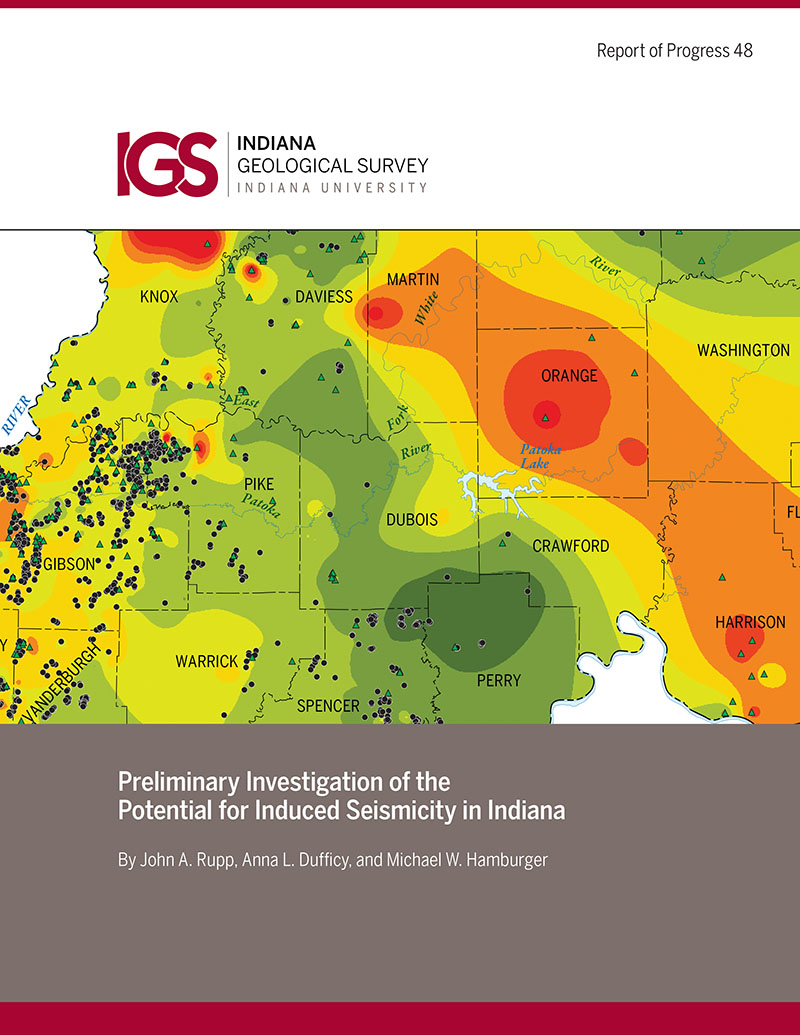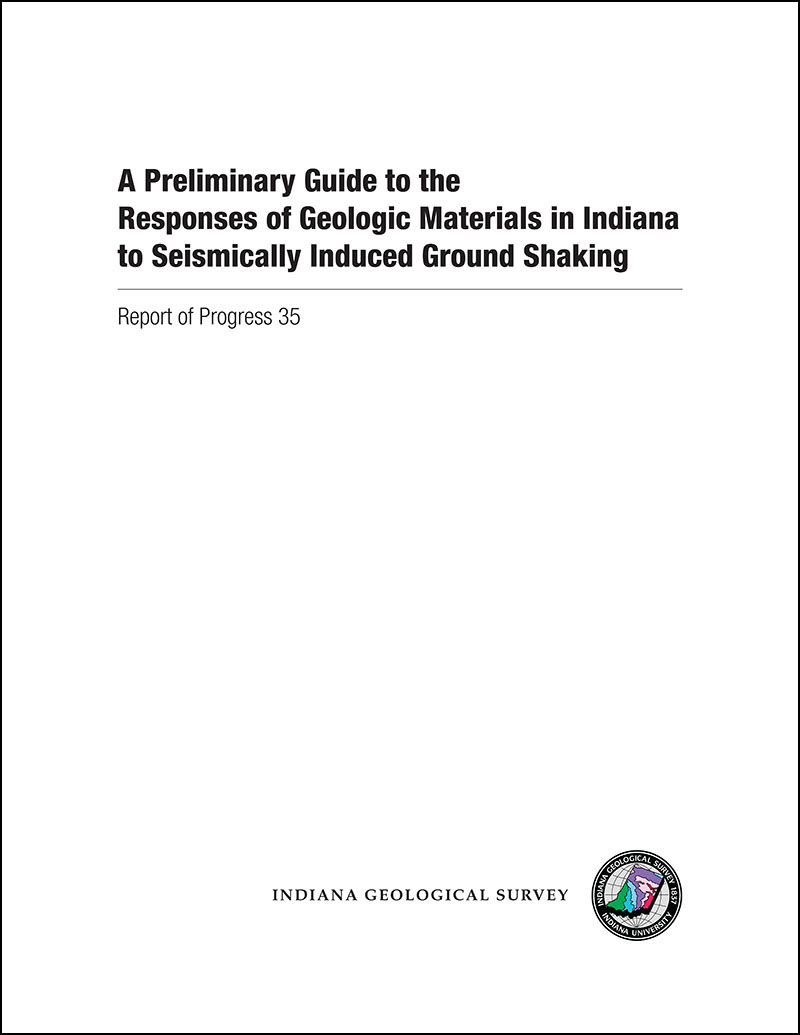Over the past decade, there has been growing recognition of markedly increased seismicity in the U.S. midcontinent. This observation has sparked interest in the possibility that earthquakes may be induced by human activities, specifically in association with wastewater injection. This concern led to numerous localized studies on the topic and in many parts of the central United States—including cases in Oklahoma, Ohio, Colorado, Texas, and Kansas—the occurrence of crustal earthquakes has been positively correlated with wastewater injection. In contrast, seismic events in Indiana have not been directly linked to subsurface injection activities to date. A study did suggest the possibility of small, injection-induced earthquakes near the Indiana-Illinois border, but with little direct evidence to test that claim. Since then, no detailed studies have been published on the subject, nor has there been a systematic collection of the data needed to make an assessment of the potential vulnerability of the state to future induced seismic activity. To assess the possibility that seismicity within the state may be associated with injection practices, we compiled a new database of injection pressure and volume data from 2004 through 2014, as well as recorded earthquakes in Indiana. The injection-well data are from the Indiana Department of Natural Resources, Division of Oil and Gas, while the earthquake data were compiled from the U.S. Nuclear Regulatory Commission and Advanced National Seismic System of the United States Geological Survey.
Using these data, a correlation in space and time between active injection wells and recorded earthquakes was explored. A spatial correlation between earthquakes and injection wells was defined as an earthquake epicenter having occurred within a given lateral distance from a wellhead that was actively injecting at the time of the earthquake. If the mapped earthquake epicenter occurred within 5 km (3.1 miles) of the surface coordinates of the injection wellhead, the correlation was considered high, and if it occurred within 15 km (9.3 miles), the correlation was considered moderate. Earthquakes that occurred outside a 15-km radius from active injection wells were considered to be not correlated. Results of this analysis show four earthquakes having high correlation and two having moderate correlation, all located in an area in southwestern Indiana with a large amount of oil and gas development activity. However, as correlation is not the same as causality, additional research should be undertaken to establish if a causal relationship between injection and seismicity indeed does exist.
Rupp, J. A., Dufficy, A. L., and Hamburger, M. W., 2016, Preliminary investigation of the potential for induced seismicity in Indiana: Indiana Geological Survey Report of Progress 48, 26 p., 20 figs., 1 table.
You may also like:
Keywords: earthquake, earthquake risk, seismicity, Indiana, fracking, petroleum, induced seismicity
Can't find what you're looking for? Feel free to contact us directly:
Indiana Geological and Water Survey
1001 E. 10th St.
Bloomington, IN 47405
812-855-7636 (phone)
812-855-2862 (fax)
IGWSinfo@indiana.edu
IGS Return Policy
- Original sales receipt required.
- Returns accepted within 30 days of purchase date.
- Refund will be issued by the same method of payment as purchased.
- Products must be returned in the same new condition as purchased.
- Refunds on custom orders and digital products are NOT allowed.
- Customers are responsible for paying shipping costs to return products.
Updated 8/19/2020




